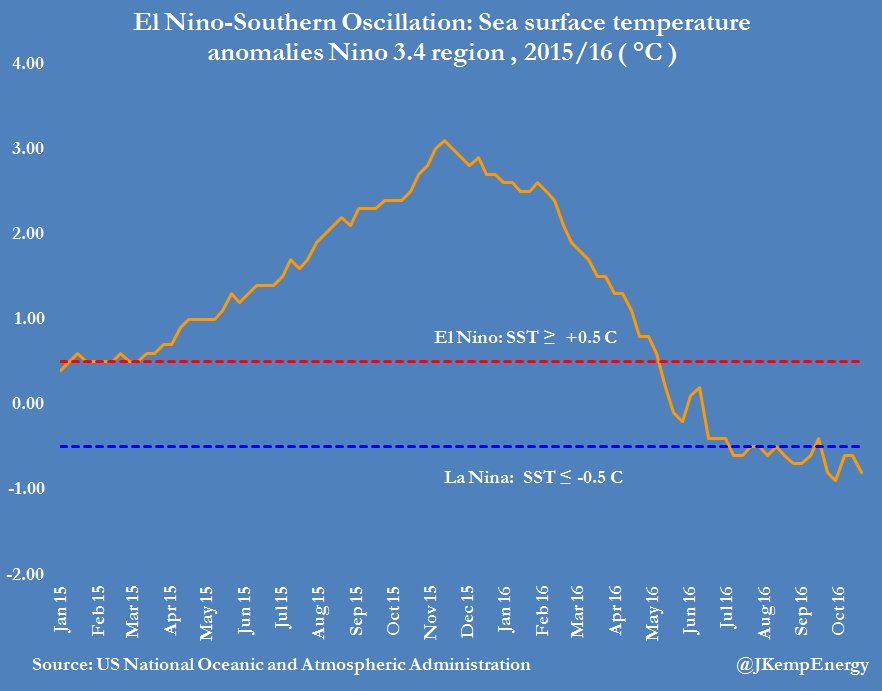October 28, 2016
Australia's climate heating and drying out: report
The contemptible rubbish below comes from people who pretend that a global temperature rise of a few hundredths of one degree tells us something important. It does not. Such rises are well within the error of measurement and are not statistically significant for a start. And they would be trivial even if they were significant.
And when there was a rise of around a degree last year, it was due to El Nino. El Nino was such a well known natural effect that they had to mention it below but, without mentioning a scrap of evidence, they dismissed it as a minor effect.
Well let me mention some evidence. The authors below imply that the temperature rise was part of a continuing warming process due to increased level of CO2 in the atmosphere. So there must be some sign in the record that CO2 levels have increased recently. But look at the CO2 levels from Australia's Cape Grim climate observatory over the heart of the El Nino period.
Within an accuracy of parts per billion, there was NO increase in CO2 levels at all! The warming over the El Nino period was ENTIRELY natural, with NO contribution from a CO2 rise. CO2 levels did NOT rise so they CANNOT be responsible for the higher temperatures.

The article below is an egregious example of cherry-picking and outright lying
The biannual State of the Climate report from the Bureau of Meteorology and CSIRO shows the effects of climate change are being felt in Australia.
Australia is becoming an even more sunburnt country with worse droughts and more extreme flooding rains.
The latest State of the Climate report, released on Thursday, shows the trends of climate change in Australia are continuing.
"Climate change is happening now; it's having a tangible impact on Australia," the Bureau of Meteorology's climate monitoring manager Karl Braganza told reporters.
The biannual snapshot, prepared by the bureau and CSIRO, shows the country is experiencing very hot days more frequently and rainfall is reducing across the southern part of the continent.
Between 1910 and 1941 there were 28 days when the national average temperature was in the top extremes recorded. In 2013 alone there were 28 such days.
Dr Braganza predicted the record-breaking extreme heat will be considered normal in 30 years' time.
The report also shows below average rainfall across southern Australian in 16 of the past 20 autumn-winter seasons.
"This decline in rainfall for southern Australia, 10 to 20 per cent might not sound like a lot but it's reducing at a time of year where typically we recharge the soil moisture and vegetation and water storages as well," Dr Braganza said.
A 10-15 per cent reduction in rainfall over winter can lead to a 60 per cent reduction in stream flow into water storages.
"That's what we're seeing in southwest WA where their water storages from essentially rainfall (dropped) in 2015 and they're using desal and groundwater to make up the difference," he said.
This combination of drying out and warmer weather increases fire danger, with the fire season already routinely extending into spring and autumn.
The report also shows 15 of the 16 hottest years on record were the past 15 years.
"The earth is warming," CSIRO climate science centre interim director Steve Rintoul said.
While there was some natural variability in temperature caused by effects such as El Nino and La Nina, it was not sufficient to drown out the overall trend towards increasing temperatures, he said.
SOURCE
Go to John Ray's Main academic menu
Go to Menu of longer writings
Go to John Ray's basic home page
Go to John Ray's pictorial Home Page
Go to Selected pictures from John Ray's blogs